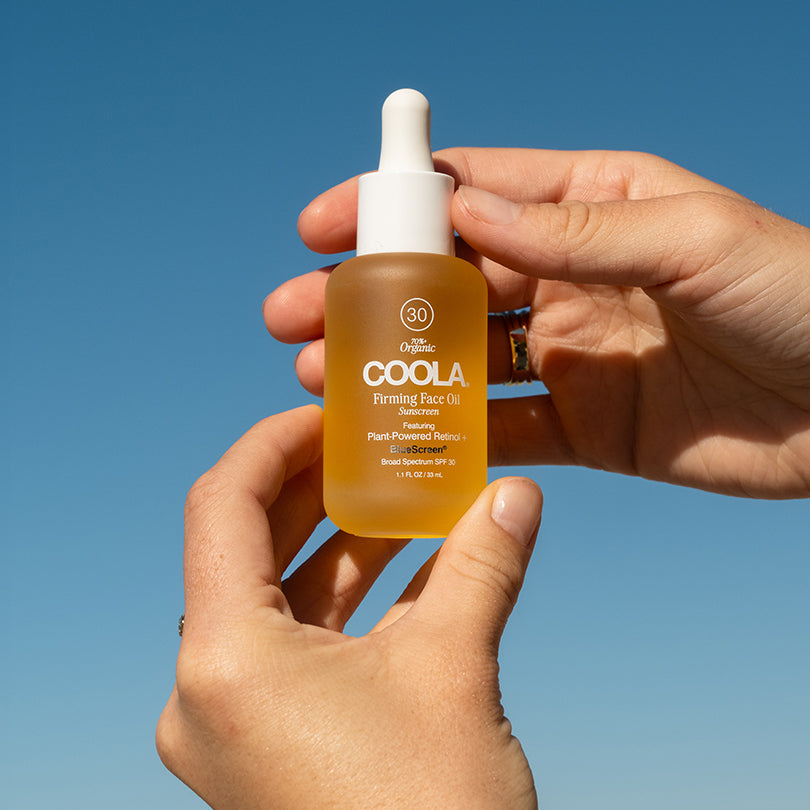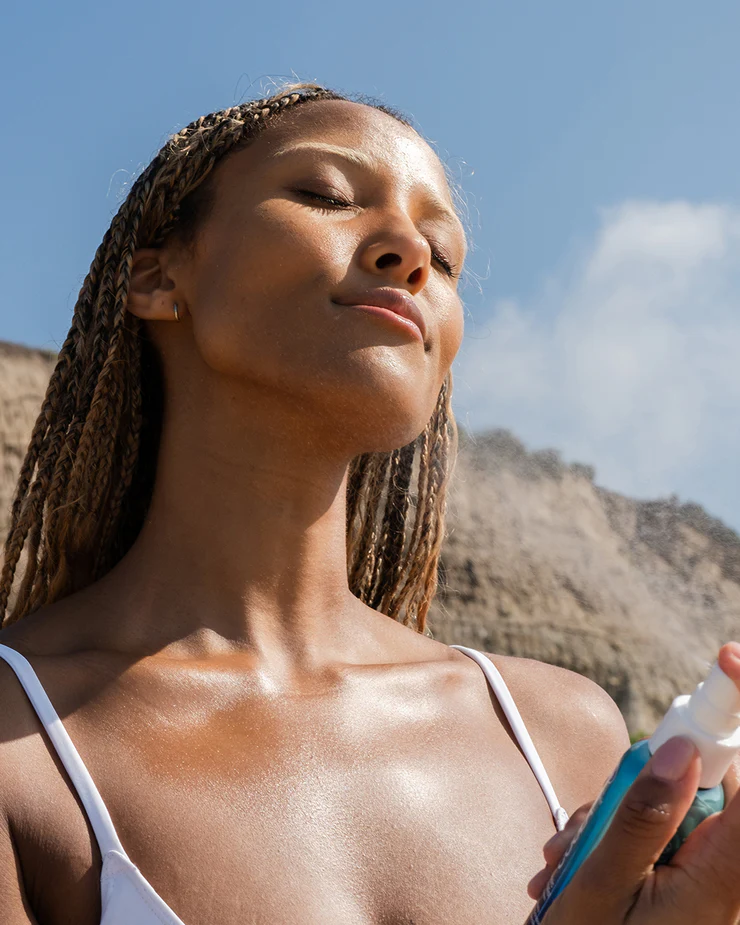While planning your next beach vacation, or just searching for a better sunscreen option, you may have come across the phrase “reef-safe sunscreen.” Not sure what this means or why it’s important to your SPF selection? Read on to get all the details on what reef-friendly sunscreen is, how it’s relevant to your suncare choices, and how to find the right SPF for you.
What Does Reef Safe Mean?
First, let’s start with the basics: What does it mean for your sunscreen to be reef-safe? The term “reef-safe” or “reef-friendly” isn’t a strictly defined classification or standard, and the issue of reef safety is continuing to develop over time. This article will provide guidance on what people mean when they use the phrase “reef-safe” when it comes to SPF for the modern world.
What sunscreens are reef safe? Most simply stated, for a suncare product to currently be considered reef-safe (or reef-friendly), its formula must not contain Oxybenzone and Octinoxate—two potentially harmful UV-blocking chemicals that are commonly used as SPF ingredients.
Your next thought may be, “How does sunscreen that I apply even get to a coral reef?” Well, when we swim or even shower while wearing these chemical filters, they rinse from us and wash into the waterways and, in turn, the oceans. This may seem like a small occurrence with little impact on the environment, but, it’s estimated that thousands of tons of sunscreen infiltrate reef areas every single year.
So why does this matter? Some studies have shown that these two potentially harmful chemicals, Oxybenzone and Octinoxate, which are popular UV filters in many sunscreens, can cause coral bleaching. When coral bleaches (or turns from its beautiful, rich colors to white), it’s still alive but very stressed, which leaves it vulnerable to disease and even death.
What Makes a Sunscreen Reef Safe?
The loss of coral may not seem like a big deal, but its impact is far-reaching and goes beyond just the health of reefs. Thousands of marine animals depend on coral reefs for survival, including everything from sea turtles to sea birds. Coral reefs provide shelter, protection from predators, and a safe place for marine life to lay eggs.
And that may not be the end of the harm that these common sunscreen chemicals cause. Some studies have also found evidence of more oceanic damage, including impaired algae growth and even birth defects among marine animals.
And while mitigating the effects of these chemicals is very important, this “reef-safe” designation is relatively new. The Hawaii Reef Compliant Act 104, as of January 1, 2021, prohibits the sale of sunscreens containing the chemicals Oxybenzone and Octinoxate in Hawaii that could potentially cause coral-bleaching.
At COOLA, we prioritize organic ingredients and healthier formulas, so out of an abundance of caution, we never use Oxybenzone and Octinoxate in our products.
What Sunscreens are Reef Safe?
Understanding what makes sunscreen reef safe before choosing your next SPF can help protect the health of coral and marine life. Namely, making sure that you use a healthier sunscreen, free of potentially harmful ingredients. But, how do you know if your favorite suncare is safe to use?
Reef safety is an evolving topic., With COOLA’s cause for coral, we’re determined to stay on top of it, continuing to offer the best products that also take care of the reefs located where we love to swim and surf. Selecting organic SPF, free from harmful chemicals, is not only beneficial to the Earth and its marine environments but is also a healthier choice for you and your skin.
At COOLA, we ensure that every COOLA product you pick up meets the requirements of the 2021 Hawaii Act (Act 104). Our collection of mineral sunscreen meets the evolving requirements of certain islands by providing a 100% mineral-based formula.
Many mineral-based sunscreens use ingredients like Zinc Oxide and Titanium Oxide, which are not associated with coral bleaching. When selecting a mineral-based sunscreen, make sure it's labeled as "non-nano." This means that the particles in the sunscreen are larger than 100 nanometers and, therefore, too large to be ingested by coral.
Why is Reef Safe Sunscreen Important?
Whether you pick a chemical or mineral formula, look for paraben-free SPF. Parabens are preservatives found in some toxic sunscreens that have been shown to cause coral reef bleaching as well.
Finally, look for a reef-friendly sunscreen with good water resistance. A sunscreen that stays on longer when you’re in the water is less likely to wash off, keeping you and the reefs better protected. To maximize your sunscreen's water resistance, always follow the application instructions on how long to wait before jumping in the water.
Whichever eco-friendly sunscreen you ultimately choose, make sure to reapply often and rub it in thoroughly, especially after swimming or enjoying a dip in the ocean.
Key Takeaways
- Traditional sunscreens with Oxybenzone and Octinoxate, known for environmental contamination, can cause irreparable damage to coral and marine life.
- Reef-friendly sunscreen offers protection against UV rays while safeguarding marine ecosystems.
- Sunscreen should be a staple year-round. Use sunscreen SPF that is 30 or higher to protect skin against skin cancer ∉ Opt for a mineral-based sunscreen with Titanium Dioxide or Zinc Oxide to help prevent coral ingestion.
- Spread the word and support initiatives like tips for a more sustainable life



